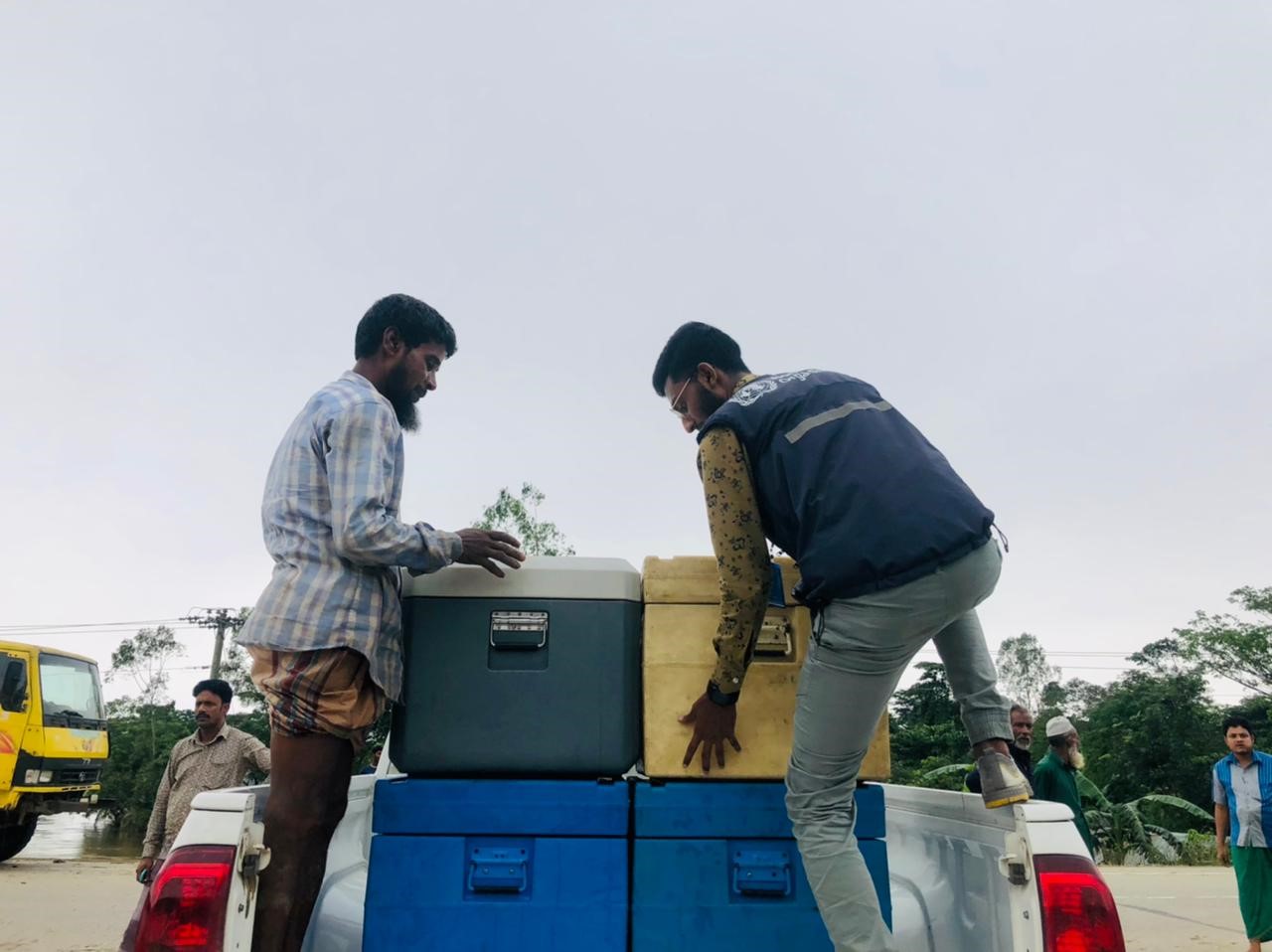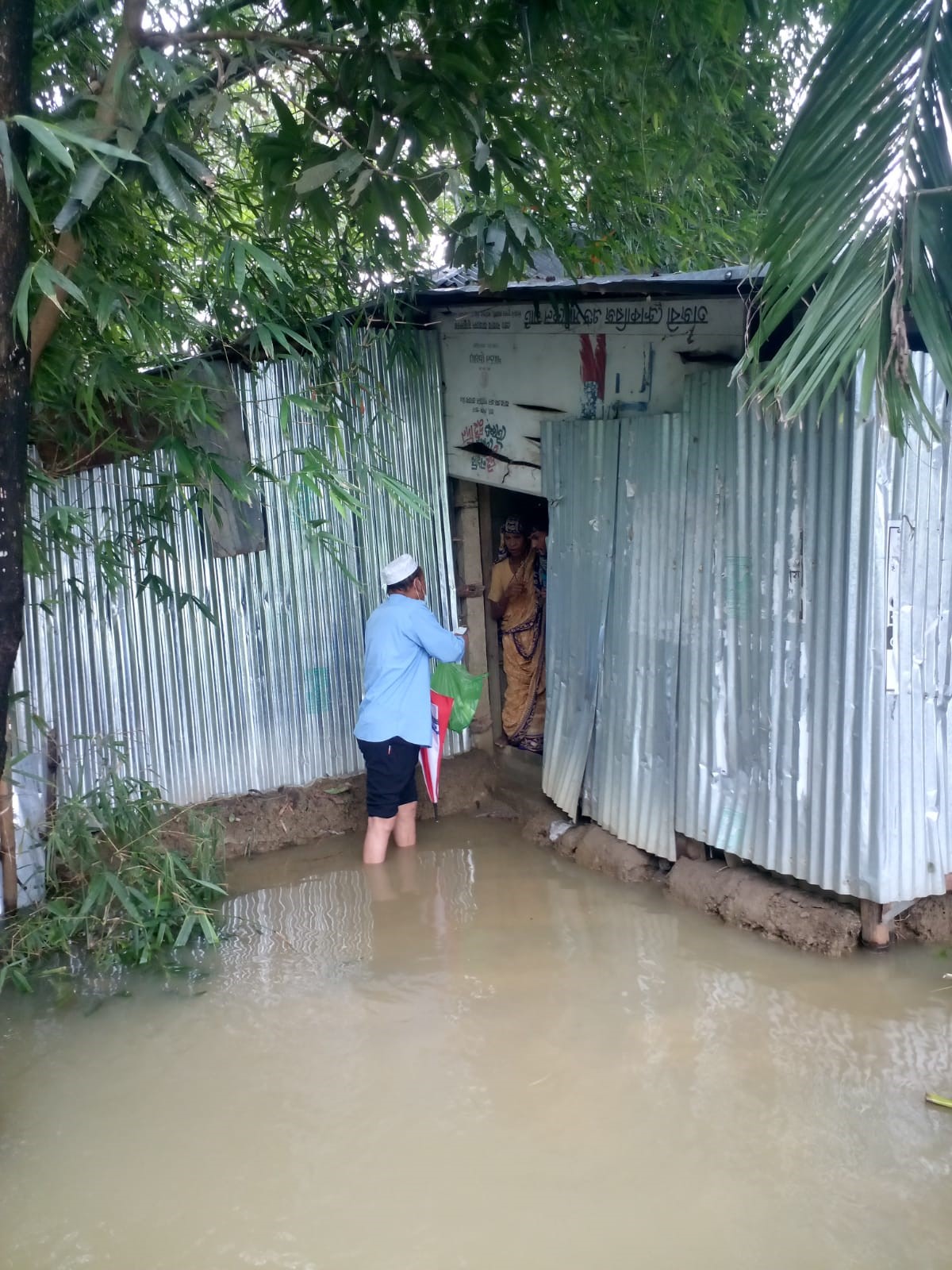The dreadful flood in Bangladesh is deeply concerning, and I am saddened by the suffering of millions of flood-affected people in the country. My prayers and heartfelt condolence go to them and to those who have lost loved ones,” said Dr. Bardan Jung Rana, WHO Representative in Bangladesh, World Health Organization.
The floods started on 17 May 2022 affecting Sylhet and Sunamganj districts of Sylhet divison. Later from 17 June, it has assumed a more devastating magnitude and affected additional districts in Sylhet and Mymensingh divisions. Currently a total of 14 districts (Sylhet, Sunamganj, Hobigonj, Moulvibazar, Mymensingh, Netrokona, Jamalpur, Sherpur, Rangpur, Panchagarh, Nilphamari, Lalmonirhat, Kurigram, Thakurgaon, Dinajpur and Gaibandha including 61 Upazilas and 388 unions) have been affected either fully or partially. However, the health impact in terms of deaths, injuries and diseases have been more pronounced in Sylhet and Sunamganj districts.
More than 4.3 million people are impacted by this sudden flash flood and water congestion. Many households are isolated due to floods, while some have taken shelter in open areas. The safety and security of women and girls in those households are at high risk. As of 20 June, a total of 2492 cases of diseases and injuries have recorded by DGHS. The cases include Acute Watery Diarrhea (AWD), Skin, respiratory and eye infections, near drowning and injuries lightning. There is a possibility of additional disease outbreaks as the water recedes. Among the cases 75% are acute watery diarrhea.
WHO and DGHS/MOHFW as Health Cluster Co-leads are closely monitoring the overall flood situation through the Health Emergency Operations Centre, Control Room, and other partners. In the meantime, WHO provided emergency drugs and supplies (such as Antibiotic, IV saline, ORS, Water Purification Tablet) to the Sylhet, Chattogram, Rangpur, Rajshahi, and Mymensingh divisions to replenish emergency medical buffer stock that have been utilized. At the national level, WHO Health Emergency (WHE) Team has been collecting and sharing information and data on the event. WHO provides health sector inputs (impact, needs, response, gaps, and constraints) regularly for the UN Flash report. WHO field-based staff at Divisional and district levels have supported local health officials in flood-affected areas in disease surveillance and coordination activities.



WHO response in the flood affected areas in Sunamganj & Sylhet, Photo credit: WHO/Mr Tareq Hassan
WHO organized a health cluster meeting on 14 June 2022 to discuss coordinated preparedness and response to the floods this season to reduce death and diseases. Emphasis was on preventing and managing drowning and snake bite that are the main causes of mortality and morbidity during floods in Bangladesh. Regular meetings will be held to update and coordinate partner support constantly.
WHO has also supported the deployment of Mobile Medical Teams to provide immediate medical needs and ensure continuity of essential services for those affected.
